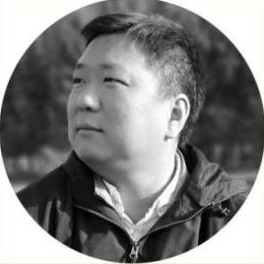Celebrating the 18th Anniversary of the Invention of the First Nanogenerators
A special issue of Nanoenergy Advances (ISSN 2673-706X).
Deadline for manuscript submissions: 30 June 2024 | Viewed by 10705
Special Issue Editors
Interests: piezoelectric/triboelectric nanogenerators; triboelectric mechanisms and piezoelectric (photo)electronics; other applied fundamentals; functional devices; integrated systems research
Special Issues, Collections and Topics in MDPI journals
Interests: ferroelectric nanomaterials and devices; hybridizd and coupled nanogenerators; self-powered sensors; other energy-scavenging devices
Special Issues, Collections and Topics in MDPI journals
Special Issue Information
Dear Colleagues,
The first nanogenerator was invented in 2005 by Wang’s group. Ever since then, several important fields have been coined: piezoelectric nanogenerators, triboelectric nanogenerators, pyro-electric nanogenerators, self-powered sensors, piezotronics, piezo-phototronics, tribotronics, and more. Their invention has inspired a worldwide effort in energy harvesting and sensors for the Internet of things, robotics, artificial intelligence, human–machine interfacing, blue energy, etc. Based on the SCI database, there are 12000 researchers, distributed in over 83 countries and regions, who are engaged with nanogenerators. Through continuous development over the years, there are many types of nanogenerators. The type of energy that can be collected and converted varies from one type of nanogenerator to another. Piezoelectric nanogenerators and triboelectric nanogenerators can collect mechanical energy from the environment. Pyroelectric and thermoelectric nanogenerators can come to harvest thermal energy. With the exception of triboelectric nanogenerators, other different types of nanogenerators are based on different functional materials; for example, piezoelectric materials, ferroelectric materials, thermoelectric materials, etc. Using these multifunctional types of materials, hybridized and coupled nanogenerators can harvest various types of energy with enhanced energy conversion efficiency. On a material basis, the performance of nanogenerators can be enhanced for wider applications in various fields. At the most basic level, the characteristics of nanogenerators allow them to be used not only as sources of power supply but also as self-powered sensors; however, in the era of intelligence, nanogenerators have a wide scope for development and can be combined with the Internet of things as well as artificial intelligence to bring out greater potential.
To celebrate the great success of the nanogenerator field, the journal of Nanoenergy Advances will publish a Special Issue on the occasion of the 18th anniversary of nanogenerators by reporting on the most recent progress in the field. The objective is to continuously promote its development and technological impact. We sincerely invite you to author an article on a topic related to nanogenerators. Thank you very much.
Prof. Dr. Zhong Lin Wang
Prof. Dr. Ya Yang
Guest Editors
Manuscript Submission Information
Manuscripts should be submitted online at www.mdpi.com by registering and logging in to this website. Once you are registered, click here to go to the submission form. Manuscripts can be submitted until the deadline. All submissions that pass pre-check are peer-reviewed. Accepted papers will be published continuously in the journal (as soon as accepted) and will be listed together on the special issue website. Research articles, review articles as well as short communications are invited. For planned papers, a title and short abstract (about 100 words) can be sent to the Editorial Office for announcement on this website.
Submitted manuscripts should not have been published previously, nor be under consideration for publication elsewhere (except conference proceedings papers). All manuscripts are thoroughly refereed through a single-blind peer-review process. A guide for authors and other relevant information for submission of manuscripts is available on the Instructions for Authors page. Nanoenergy Advances is an international peer-reviewed open access quarterly journal published by MDPI.
Please visit the Instructions for Authors page before submitting a manuscript. The Article Processing Charge (APC) for publication in this open access journal is 1000 CHF (Swiss Francs). Submitted papers should be well formatted and use good English. Authors may use MDPI's English editing service prior to publication or during author revisions.
Keywords
- piezoelectric materials
- ferroelectric materials
- thermoelectric materials
- triboelectric nanogenerators
- piezoelectric nanogenerators
- pyroelectric nanogenerators
- thermoelectric nanogenerators
- hybridized and coupled nanogenerators
- self-powered sensors




